For more information on this event please also visit the Hellenic Ministry of Culture and Sport.
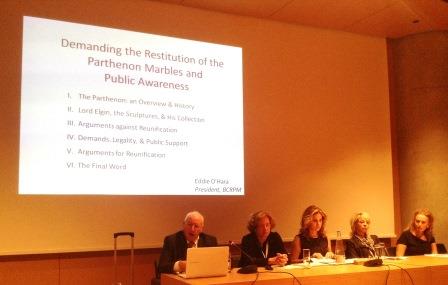
23 October 2013 , Athens, Greece
Eddie O’ Hara, Chairman of the British Committee for the Reunification of the Parthenon Marbles
THIRD INTERNATIONAL CONFERENCE OF EXPERTS ON
THE RETURN OF CULTURAL PROPERTY
OLYMPIA 23-27 OCTOBER 2013
THE CASE FOR THE REUNIFICATION OF THE PARTHENON MARBLES
I am fortunate today to have available to me the best possible of visual aids to support the case which I shall put before you. We are sitting in a museum, past winner of the Museum of the Year Award, the principal display of which is the very subject which I shall be presenting. We also sit within sight of that subject, the Parthenon, whose surviving sculptural components – not adornments – components, are at issue.
THE PARTHENON MARBLES, known also as The Parthenon Sculptures, formerly but I am pleased to say no longer The Elgin Marbles, are the subject of one of the oldest and most passionate disputes over the return of cultural property.
THE BRITISH COMMITTEE FOR THE REUNIFICATION OF THE PARTHENON MARBLES has been campaigning for thirty years in support of the reunification of these marbles. I pay tribute to Eleni Cubitt and her late husband James for their inspiration and initiative in establishing the committee, and the many distinguished academics, many now deceased, who have served the committee over that time. Over the years similar groups have been established in other countries. Now there are nearly 17 organisations on four continents, most of them affiliated to the International Association for the Reunification of the Parthenon Sculptures (IARPS).
I must first present the background to the dispute. This will be simply factual and descriptive – and brief. It will not include analysis of the artistic merits of the Parthenon and its sculptures. It will necessarily skate over some scholarly details. I apologise for this to those with much knowledge of the subject if this is superficial. My purpose is to spend as much of my time as possible on the dispute over reunification of the Parthenon Marbles.
THE ACROPOLIS OF ATHENS is one of the most recognised and most visited of UNESCO World Heritage Sites, thanks to its historical significance and its surviving monuments dating from the most significant period in the history of the Athenian city state. THE PARTHENON is the most important of these monuments. It is the temple of Athena Parthenos (“Virgin”), the patron goddess of Athens.
It had a number of predecessors, the most recent of which was destroyed in the Persian invasion of 480 BC during which the Acropolis was sacked and razed. The ruined Acropolis was not restored for the next 30 years during which the Athenians took the action to the Persians.
In 449 BC hostilities with Persia were formally concluded. Pericles thereupon embarked upon a major building programme on the Acropolis, including a new Parthenon. The Parthenon was dedicated in 4488 BC and the last records of carving and erection (of the pediments) date from 443/2 BC
It is of the DORIC order, with 46 columns, 92 metopes and 2 triangular pediments
It also, exceptionally, has a feature of the IONIC order, a continuous frieze around all four sides within the colonnade
Its various sculptures suggest one unifying hand. We know that Pheidias was the master sculptor. The Parthenon and its sculptures are generally recognised as the high point of classical art
POST CLASSICAL HISTORY
During the early Christian era it was adapted for use as a church (Our Lady of Athens). The works of adaptation caused some damage to original features (frieze and E pediment).
In 1456 the Ottoman Turks occupied Athens. They converted the Parthenon into a mosque with a minaret.
In 1674 the French ambassador to the Turkish court visited Athens accompanied by the artist Jacques Carrey. Carrey made sketches of the Parthenon, very timely as he recorded details which were subsequently damaged or destroyed.
In 1687, during a Venetian attack on Athens, a shell made a direct hit on the Parthenon which the Turks were using to store armaments. Most of the interior walls were blown out. Most of the frieze was brought down. The central columns on the south and north sides were destroyed, together with also most of the metopes between them.
In 1688 the Turks regained control of Athens but the damaged masonry and sculptures were left to lie where they fell, at the mercy of looters and those able to bribe local officials, the most notable of whom was Lord Elgin.
Thomas Bruce, 7th Earl of Elgin, appointed in 1798 as Ambassador to Turkey, or
Ambassador Extraordinary and Minister Plenipotentiary of his Britannic Majesty in the Sublime Porte of Selim III, Sultan of Turkey
At the time Turkey had cause to be grateful to Britain for their victories over Napoleon in Egypt.
Elgin decided to follow the then fashion of collecting classical pieces to adorn the country home he was building in Scotland.
HIS AUTHORITY TO REMOVE PIECES OF THE PARTHENON
In 1801 after much wrangling Elgin was able to present to the Voivode of Athens a firman setting out the licence given to his agents. The original of the firman has been lost but a translation into Italian survives. Elgin’s agents were given licence to gain access to the Parthenon to make plaster casts, and to remove qualche pezzi di pietra con iscrizioni e figure.
On July 31st 1801 Elgin’s agents used cutting equipment to remove a metope from the Parthenon and between then and July 1802 half of Elgin’s eventual collection was acquired.
In 1802 Elgin made his first visit to Athens and sent 17 crates to England in the ship Mentor. The Mentor sank off Kythera.
In 1803 Elgin left Constantinople at the conclusion of his term of office but en route home was detained in France due to the state of war between France and Britain. Meanwhile in 1804 the Mentor’s cargo was salvaged at a cost of £5,000. In 1805 the Voivode of Athens forbade further collecting by Elgin’s agents.
In 1806 Elgin was released by the French. He was by now financially embarrassed having incurred total costs of £39,000 on his collection. He displayed his collection in a shed at his home in Park Lane, London.
THE SCULPTURES OF THE PARTHENON AND THE COMPONENTS OF ELGIN’S COLLECTION
The details are variously known from ancient descriptions (e.g. by Pausanias), ancient depictions (e.g. on vases) and later drawings (notably by Carrey).
THE METOPES were rectangular faces set above the columns. There were 92 in total. The subjects were scenes from 4 different battle. This subject enabled a wide variety of composition and action in the 92 rectangular frames. 15 are in Elgin’s collection in the British Museum. There is 1 in the Louvre and the rest that survive in Athens.
THE PEDIMENTS were free standing sculptures on the floors of the pediments in a very low isosceles triangular space. The east pediment depicted the birth of Athena. This was partly destroyed in the adaptation of the Parthenon to be a church. The west pediment depicted the contest between Athena and Poseidon to be the patron deity of Athens. This was partly destroyed in the 1687 bombardment. 17 pedimental figures were removed by Elgin, other parts in the Acropolis Museum.
THE FRIEZE was 160m long x c. 1m high, with maximum 6cm depth of carving. 20% was destroyed but half had previously been sketched). The theme was the Great Panathenaic Festival. 80m are in the British Museum, 50m in the Acropolis Museum, 2m in the Louvre.
THE PLACING OF THE MARBLES IN THE TRUST OF THE BRITISH MUSEUM
In 1811 to recoup his losses Elgin offered to sell his collection to the government for £62,400. They offered £30,000. In 1815 a Select Committee was set up by the House of Commons to review the collection, the details of its acquisition and its possible purchase. Among the issues considered were: the amount of damage and defacement; Elgin’s authority to acquire them; the extent to which he exploited his position as a public servant; the amount concern of the Turks for the monuments; the concern of their Greek subjects; whether Elgin saved them from ruin; comparisons of quality with other similar purchases; whether their acquisition was beneficial to the development of art in Britain; Lord Elgin’s costs; Lord Elgin’s motives.
In 1816 the committee valued the collection at £35,000. The proposal was put to Parliament. There was much opposition to Elgin’s acquisition of his collection and to their purchase, not least on the grounds of moral propriety. The poet Byron gave the strongest expression to this: Frown not on England; England owns him not Athena, No! Thy plunderer is a Scot.
An act of Parliament transferred ownership of the collection to the nation to be kept in trust by the British Museum. During their time in the British Museum the surface of the marbles has been damaged by inappropriate methods of “cleaning” them in the 19th century and more recently in 1937-38, finally admitted by the museum only in 1999. In 1962 the Duveen Gallery was opened for the display of the “Elgin Marbles”. This has recently been renamed “The Parthenon Room”.
THE PIECES SUBJECT TO DEMANDS FOR REPATRIATION/REUNIFICATION
Apart from the 17 crates on the Mentor Elgin sent many other shipments from Athens. The full inventory of the pieces offered by him for sale to the nation is in the minutes of the 1815 Select Committee. The Greek Government seeks the return of 90 pieces from the Parthenon, 1 Caryatid and one column from the Erechtheum.
The British Committee for the Reunification of the Parthenon Marbles confines its campaigning strictly to the case for these pieces.
ARGUMENTS AGAINST REUNIFICATION
Many of the traditional arguments put forward by the British Museum have been discredited as variously obsolete, irrelevant, disingenuous or statistically dubious . However there are several which continue to require refutation:
THE PARTHENON CAN NEVER BE COMPLETELY RESTORED WITH ITS SCULPTURES IN SITU: True, but the Acropolis Museum is specifically LOCATED, DESIGNED AND ORIENTATED to be the one place on earth where a visitor can have a SIMULTANEOUS VISUAL AND AESTHETIC EXPERIENCE OF THE PARTHENON AND ITS SCULPTURES.
THE SCULPTURES OF THE PARTHENON ARE OF GLOBAL SIGNIFICANCE. THE BRITISH MUSEUM IS ONE OF A SELECT GROUP OF “UNIVERSAL MUSEUMS IN WHICH THEY CAN BE PRESENTED IN THEIR GLOBAL CONTEXT: True, the BM is a magnificent institution but its self-description as a “universal” museum is based on the size and extent of its collection. It does not in itself bestow a transcendental claim to any cultural property which may form part of another legitimate narrative in another museum.
THE “FLOODGATES” ARGUMENT – THAT TO CONCEDE THE CLAIM FOR THE REPATRIATION OF THIS CULTURAL PROPERTY WOULD PROVIDE A PRECEDENT FOR A FLOOD OF SIMILAR CLAIMS WHICH EMPTY THE GALLERIES OF THE WORLD’S MUSEUMS: This argument resonates strongly but superficially in public opinion, but is exaggerated. It is promulgated by the Bizot Group of self-designated “universal” museums who display only a fraction (perhaps 20%) of their collections. It is also tantamount to an admission that a large portion of their collections is of questionable provenance (e.g. colonial loot). Anyway all claims have to be treated on their individual merits. There are few examples comparable with the Parthenon Marbles.
DID LORD ELGIN ACQUIRE THE MARBLES LEGALLY?
The evidence of the (Italian translation) of the firman is inconclusive. Elgin’s agents were given licence to remove qualche pezzi di pietra…. Qualche means “some” or “ few”. Elgin’s agents seem to have interpreted this to mean “any” that they chose. In Italian this would be qualunque. Also important research has been done by Elena Korka, including a study of Elgin’s correspondence, after his return home, with Robert Adair, a British official then in contact with the Ottoman authorities. This suggests that Elgin bought the property from those who had no right to sell them. It also indicates his difficulties in obtaining permission for later shipments. This casts doubt on Elgin’s consequent legal title, and the legal title of the British government which bought the property from him, and that of the British Museum which received the property in trust.
However there are problems in presenting and winning a legal case at this distance in time. We first have to be sure of the workings of English property law in 1816. Then we have to consider current English property law, under which a purchaser in good faith of stolen property has rights of ownership. Then there is the statute of limitations (of time for bringing a prosecution. Then, who would be the proper plaintiff? Turkey, which is not now the same legal entity as the Ottoman Empire and whose writ certainly does not now extend to Athens? Or the Greek state, which did not exist in 1816 and indeed had never before existed as a legal entity? And who would be the defendant? The British Government or the British Museum? This makes litigation a complex and highly risky enterprise? And even if a case could be proved against the British Government or the British Museum, there is a further legal obstacle
Under THE BRITISH MUSEUM ACT 1963 the British Museum cannot divest itself of property in its trust except under very strict conditions. Can this be repealed to remove this obstacle? Yes, but the Bill would need to be carefully drafted to meet the requirements of Parliamentary procedure. Anyway, support from any party of government is currently not foreseeable. Private Members’ Bills have been introduced (Eddie O’Hara 2002, Andrew Dismore 2009) but have had insufficient support.
For any Bill, Public or Private, to succeed strong public support must be demonstrated. Thus the education of public and political opinion, globally but particularly in the UK, needs to be a central plank of campaigning. The public in general is not engaged with or even aware of the issue However when made aware they tend to be supportive. A wide range of opinion polls has demonstrated this. Of particular interest is the poll in 2012 of readers of the Museums Journal which showed a majority in favour of 73%. This readership is either professionally engaged or professionally interested in museums matters.
ARGUMENTS IN FAVOUR OF REUNIFICATION can be considered under three headings: aesthetic, ethical and museological.
AESTHETIC CONSIDERATIONS: The Parthenon is a fixed monument and a UNESCO World Heritage Site. The sculptures are architecturally integral to the building, yet they divided between museums 1500 miles apart. In some cases even single blocks are divided between the two museums. If not unique this is surely an extremely rare situation Thus the onus of justification surely must be on NOT reunifying the marbles.
ETHICAL CONSIDERATIONS: To the Greeks the Parthenon is an iconic symbol of their ethnic culture. The Faro Convention (2005) recognises the right of an ethnically identified group to enjoy identified components of their cultural heritage. Unfortunately neither Greece nor Britain has signed the Faro Convention but this does not alter the underlying principle. Some regard this as another cause for litigation.
MUSEOLOGICAL CONSIDERATIONS: THE CONCEPT OF UNIVERSAL MUSEUMS REVISITED: Now that “ Many of the traditional arguments against reunification are now discredited as variously obsolete, irrelevant or factually dubious, the British Museum’s position increasingly relies on its status as a “Universal/World/Encyclopaedic” Museum. This is a self-designating, self-serving concept created by the self-appointed Bizot Group of large, elite museums including the British Museum. They claim that certain museums transcend cultural and national boundaries, thus having higher order claims on cultural property than other, lesser, “parochial” museums. Thus “The life of [the marbles] as a part of the Parthenon is over. They can’t go back to the Parthenon. They are now part of another story.” Neil MacGregor, Director, British Museum. Against this I have argued that these particular sculptures are mere exemplars in the narrative which the British Museum uses them to illustrate, whereas they are central and indispensable to the narrative which they illustrate in the Acropolis Museum. In exchange for their return the Greeks could provide other exemplars to illustrate the BM’s narrative - if the BM doesn’t have sufficient other exemplars in its own stores.
Also it can be asked: do the “Universal” Museums actually communicate to the mass of their visitors the global, cross cultural narratives which they proclaim, Or are they simply a rich and varied smorgasbord made possible by the sheer size and variety of their collections? Consider: “Most of our displays mean nothing to people.” Henri Loyrette’ then Director of the Louvre, at a conference at the BM in 2003
The concept of the “universal museum is by no means universally accepted: “The real agenda [of “universal” museums] is not cross-cultural connectivity but revenue generation from cultural tourism and sustaining the fiction of long-gone empire.” Tom Flynn, Art Historian
The Acropolis Museum on the other hand makes no pretensions to be a “universal museum”. It is focused on providing the most comprehensive and holistic possible descriptive and interpretative narrative of the Acropolis and its associated monuments. The sculptures of the Parthenon are central and indispensable, not mere exemplars, to this narrative. It can be argued that the non-elective role of the Parthenon sculptures in this narrative is of a higher order than their elective role in the BM’s narrative. Certainly it is questionable whether the “universal” British Museum has a transcendental claim to them on museological grounds
THE “FLOODGATES” AGUMENT REVISITED: THE SPECIAL NATURE OF THE CASE FOR THE REUNIFICATION OF THE PARTHENON MARBLES
If the marbles were returned, would this give rise to a flood of similar requests which would empty the museums of the world (especially the Bizot Group)?
What precedent would this particular repatriation set? What other fixed monuments are UNESCO World Heritage Sites have integral, sculptured, architectural components, in some cases individual blocks of marble, divided between museums in different countries 1500 miles apart? The Parthenon marbles are certainly extremely unusual and probably unique. As such they hardly provide justification for many, if any, similar demands
DISPUTE OR PARTNERSHIP: A major theme of modern museology is inter-museum cooperation. Why not by bypass arguments about legality and ownership by displaying the marbles where they belong, in their proper context and configuration in a gallery specifically designed for them, in sight of the Parthenon to which they belong, with responsibility for display, curation and study shared by the two museums?
THE FINAL WORD: A litigative solution, even if achievable, would be hollow. Any solution should be based on aesthetic, ethical and museological grounds. If legislation (e.g. repeal of the British Museum Act 1963) is needed to remove bureaucratic obstacles to a consensual process, so be it. But wouldn’t it be better if legislation were not the determining factor? Wouldn’t a consensual solution be more satisfying?
Currently the Greek Government is exploring such a solution through the UNESCO mediation process.
I WISH THAT PROCESS WELL.

Eddie O'Hara, Chair of BCRPM

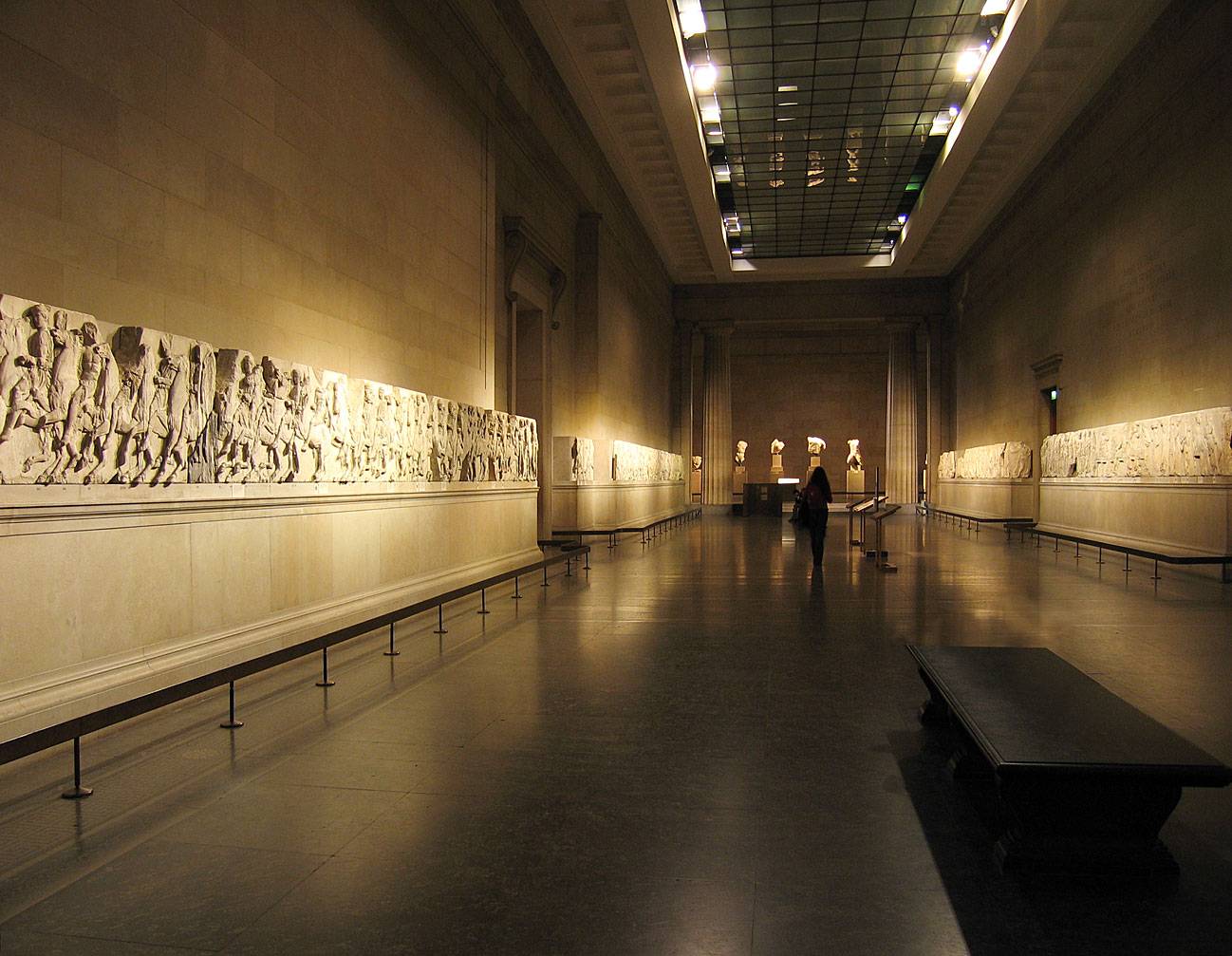
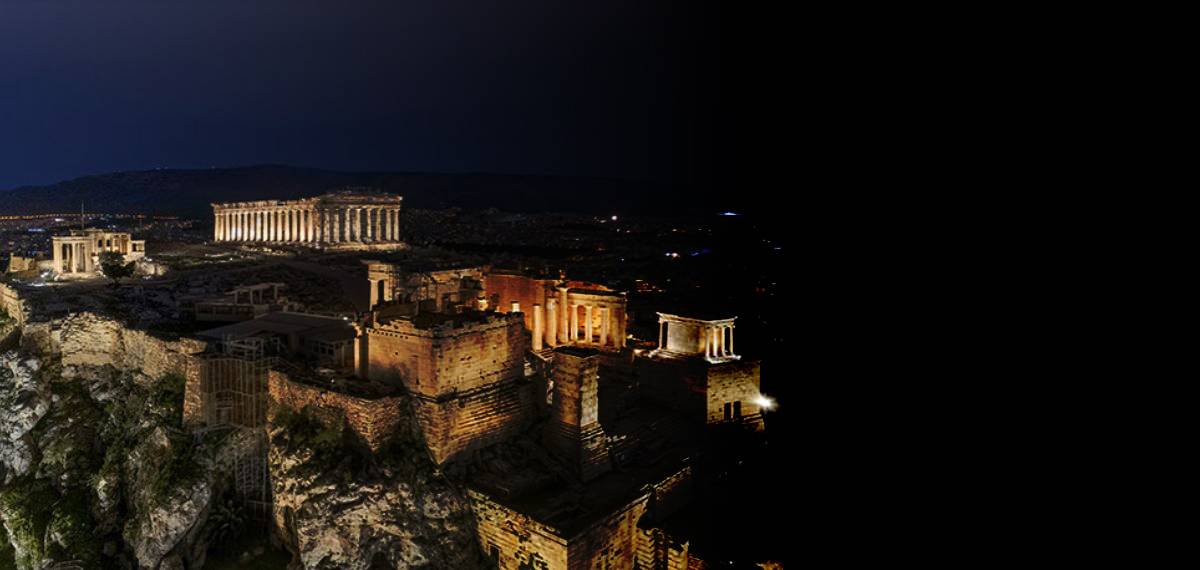
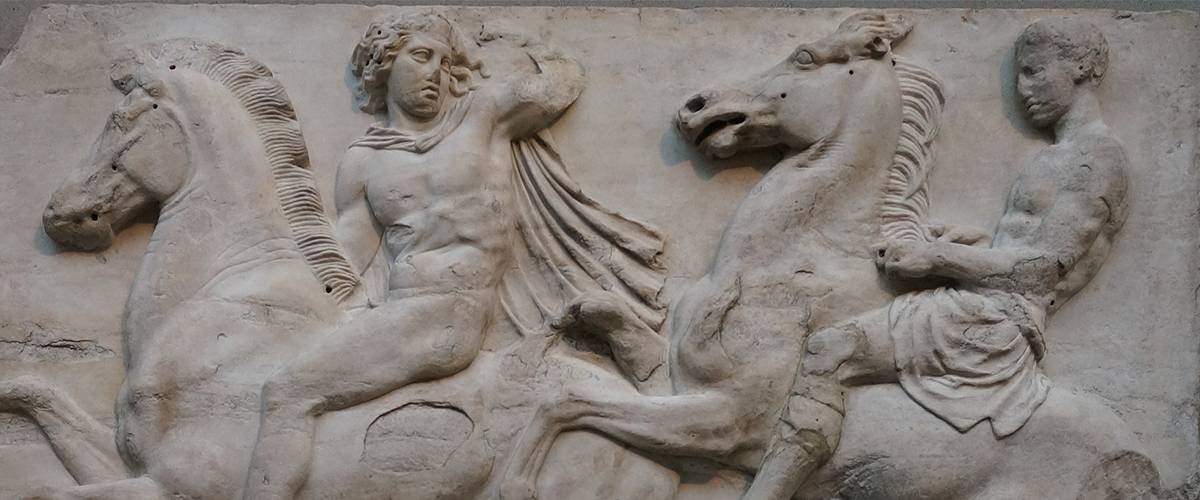

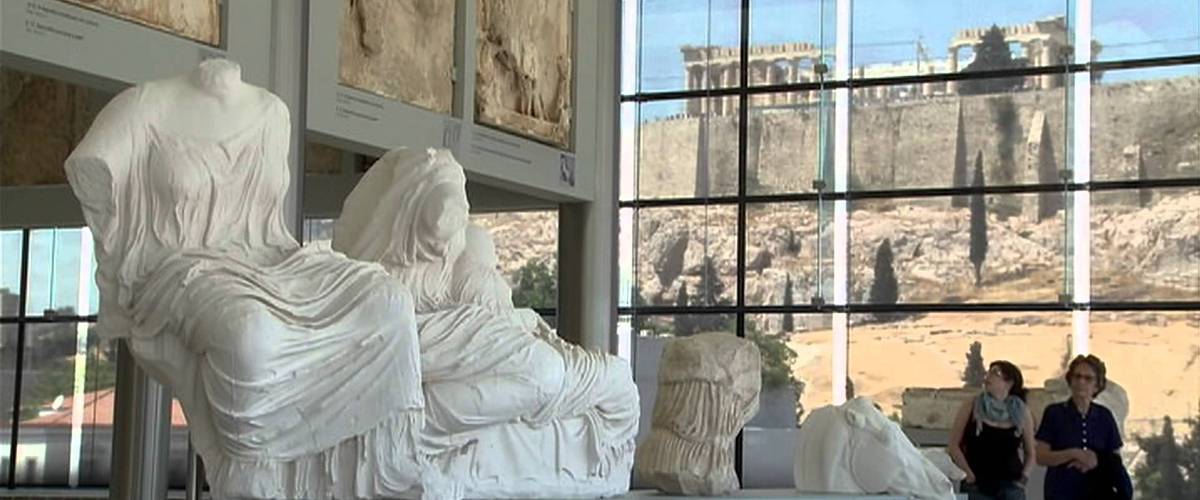

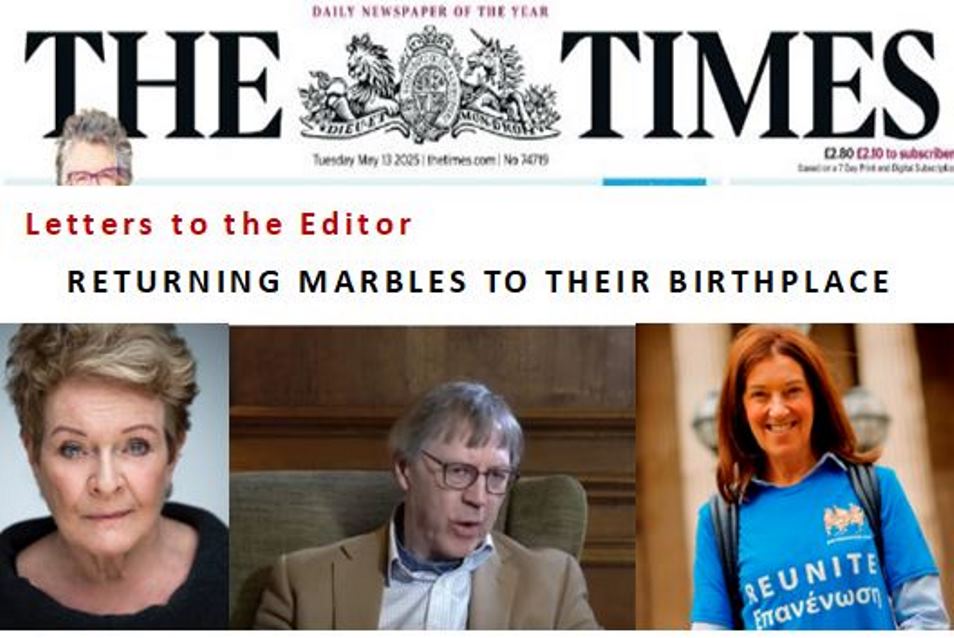
Comments powered by CComment